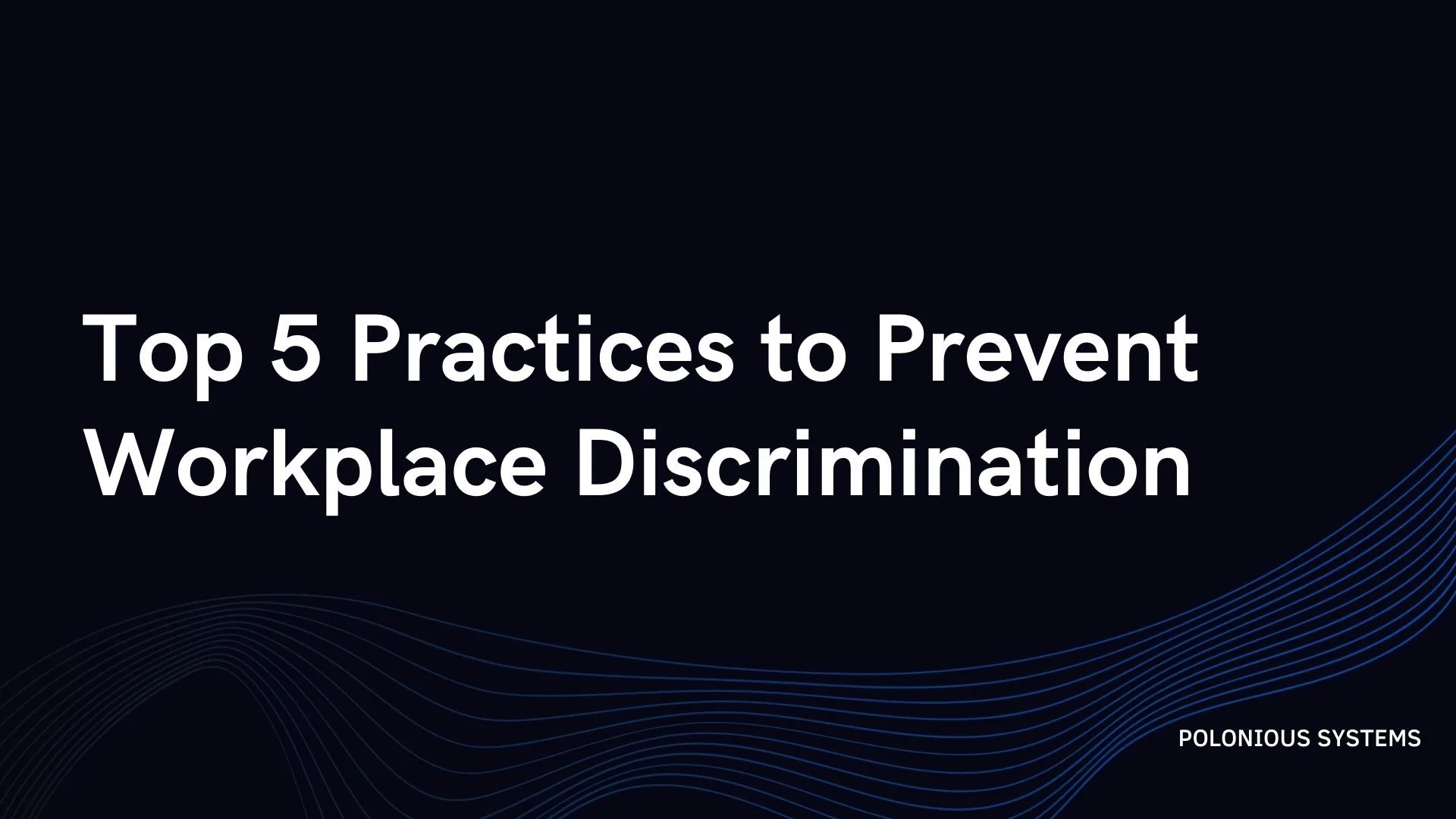Workplace discrimination may occur between colleagues, employee and employer, or between an employee and a third party. Specifically, it’s the unfair treatment of an employee or candidate based on the class or category to which they belong, rather than on individual merit.
Unfortunately, this issue is often overlooked or not spoken widely about, leaving employers and employees in the dark when it comes to dealing with discrimination. In many cases, this can also lead to employee turnovers due to a lack of effective measures to stop the problem.
Embracing cultural diversity and nurturing a fair and inclusive workplace culture is positive for your organisation and its employees, and is also the most effective way to avoid workplace discrimination and unlawful behaviour. Lawsuits are expensive and, beyond the immediate financial costs, they reduce staff productivity, wellbeing and morale. They also create reputational and brand damage.
This guide will explain the many ways that workplace discrimination can occur (e.g., direct, indirect, intentional, unintentional and reverse). Then, you’ll learn how to identify and eliminate your own discriminatory practices. We will explain the Top 5 Practices to Prevent Workplace Discrimination from occuring in order to protect your employees and business.
This blog will provide a better understanding of the issue and important steps you need to take towards the prevention of discrimination in the workplace.
This blog will be structured as below:
- Understanding Workplace Discrimination
- Types of Workplace Discrimination
- Top 5 Practices to Prevent Workplace Discrimination
Understanding Workplace Discrimination
According to the Australian Fair Work Ombudsman, Unlawful workplace discrimination occurs when an employer takes adverse action against a person who is an employee or prospective employee because of the following attributes of the person:
- race
- colour
- sex
- sexual orientation
- age
- physical or mental disability
- marital status
- family or carer’s responsibilities
- pregnancy
- religion
- political opinion
- national extraction or social origin
Discriminatory practices can happen at different points in the employment relationship, including:
- when recruiting and selecting staff
- in the terms, conditions, and benefits offered as part of employment
- who is considered or selected for promotion
- who is considered and selected for redundancy or dismissal
The following examples demonstrate implicit and explicit workplace discrimination on the basis of race or ethnicity:
- Recruiting staff solely on their ethnicity.
- Knowingly or subconsciously selecting candidates that don’t appear to be from a culturally or linguistically diverse (CALD) background.
- Declaring a job applicant unsuccessful on the basis that “they won’t fit in”.
- Making assumptions about certain ethnic groups having or lacking particular skills.
- Failing to deal with alleged cases of racial discrimination in a timely and appropriate manner.
- Failing to award CALD employees with promotions and career progression opportunities, despite meeting all performance expectations.
- Having a workplace culture that makes CALD employees feel uncomfortable or excluded.
- Encouraging or endorsing jokes based on race.
- Earmarking CALD employees for early departure in a redundancy exercise.
- Dismissing or indiscriminately targeting a worker due to his/her English speaking abilities.
All employers have a responsibility to make sure that their employees, and people who apply for a job with them, are treated fairly. This responsibility is set out in anti-discrimination laws such as Australia’s Fair Work Act 2009, the Equality act 2010 in the UK, and Title VII of the Civil Rights Act of 1964 in the United States.

Types of Workplace Discrimination
Direct Discrimination
Workplace discrimination can be direct, indirect or both.
Direct discrimination, also called disparate treatment occurs when someone treats (or encourages others to treat) someone else unfavorably because of their protected class.
Direct discrimination happens because of stereotypes about the abilities and qualities of those in protected classes. These stereotypes lead to unfair and untrue assumptions about what a person from a protected group can or can’t do.
This type of discrimination is often intentional and more obvious than other forms of workplace discrimination.
Indirect Discrimination
Indirect discrimination, often called disparate impact, is when a policy or condition is imposed that, as a side effect, disadvantages a protected group (or a person from one).
For example, implementing hiring criteria that just so happens to screen out women or minority group members has a disparate (and negative) impact on members of these groups.
Top 5 Practices to Prevent Workplace Discrimination
Discrimination can be prevented if the company takes action. The organisation should:
Develop an anti-discrimination policy
Companies’ anti-discrimination policies can vary widely depending on their culture and nature, however, it is important to highlight the employee’s right to work in a professional environment, where their skills, abilities, and knowledge are the most important factors in their success. Your company work policy should have zero tolerance for any form of harassment. Encourage employees to come forward and participate in the investigation, assuring they will be kept confidential (to a reasonable extent) as well as people who make complaints will be protected at all times. Having clear procedures and rules established is also a way to make managers and employees aware of acceptable workplace behaviour within your country. In case of misbehaviour, it will be easier to point to the policy than to refer to a law the employee may not have heard of.
Educate your workers
It is important to ensure that all employees are aware of potential discrimination issues in the workplace, have knowledge of your policies and procedures as well as how to report the allegation. It is recommended to have separate training for supervisors and managers as they are your first line of defense in preventing workplace discrimination. Also, you should strive to inform employees of the possible outcomes of discrimination, which include potential lawsuits. There are many ways to keep everybody informed and up to date about the issue, like face-to-face training, internal communications or even using visual aids in common areas to promote anti-discriminatory practices.
Establish a process for resolving workplace discrimination issues
Any employee who feels they have been discriminated against or treated negatively should report the issue to Human Resources, their direct supervisor, manager or director, and they should feel comfortable and safe when doing so. In these cases, all companies must be consistent in addressing issues through a fair and reasonable investigation even if your business is not in legal jeopardy. This will show your companies’ expectations of equal and unbiased treatment among all employees. Solving workplace discrimination issues in a timely manner should be a priority as otherwise, trust and credibility may be lost.
Reduce bias in your recruitment process
Unconscious biases are stereotypes that we unintentionally have learned. They have the ability to affect our behaviour and perception of others. This is an issue that many companies may not have in mind, but a vast body of research shows that the hiring process is biased and unfair. This can frustrate diversity, recruiting, promotion, and retention efforts. Awareness training is the first step to resolve unconscious bias in the workplace, as it allows employees to recognize that everyone possesses them and to identify their own. It is also recommended to have a standardised interview process by asking candidates the same set of defined questions that allow employers to focus on the factors that have a direct impact on performance. Giving a work sample test can also be a great tool against unconscious bias as it forces recruiters to critique the quality of a candidate’s work versus judging them based on appearance, gender, age, and even personality.
Consider more than one option for communication channels
An important part of the complaint process is providing effective and transparent communication channels. Ideally, have more than one option for employees to report discrimination, which will ensure that a supervisor cannot hide issues from Human Resources and upper management. Formal communication channels like an Intranet, emails, letters, or face-to-face interactions are crucial for the employee to be able to make their complaint and some even allow anonymous reports to be made in order to start an investigation. You can also consider keeping a more informal type of communication like holding lunchtime conversations and continuous collaboration among team members where you can identify potential discriminatory practices that otherwise may go unnoticed.
Let's Get Started
Interested in learning more about how Polonious can help?
Get a free consultation or demo with one of our experts




